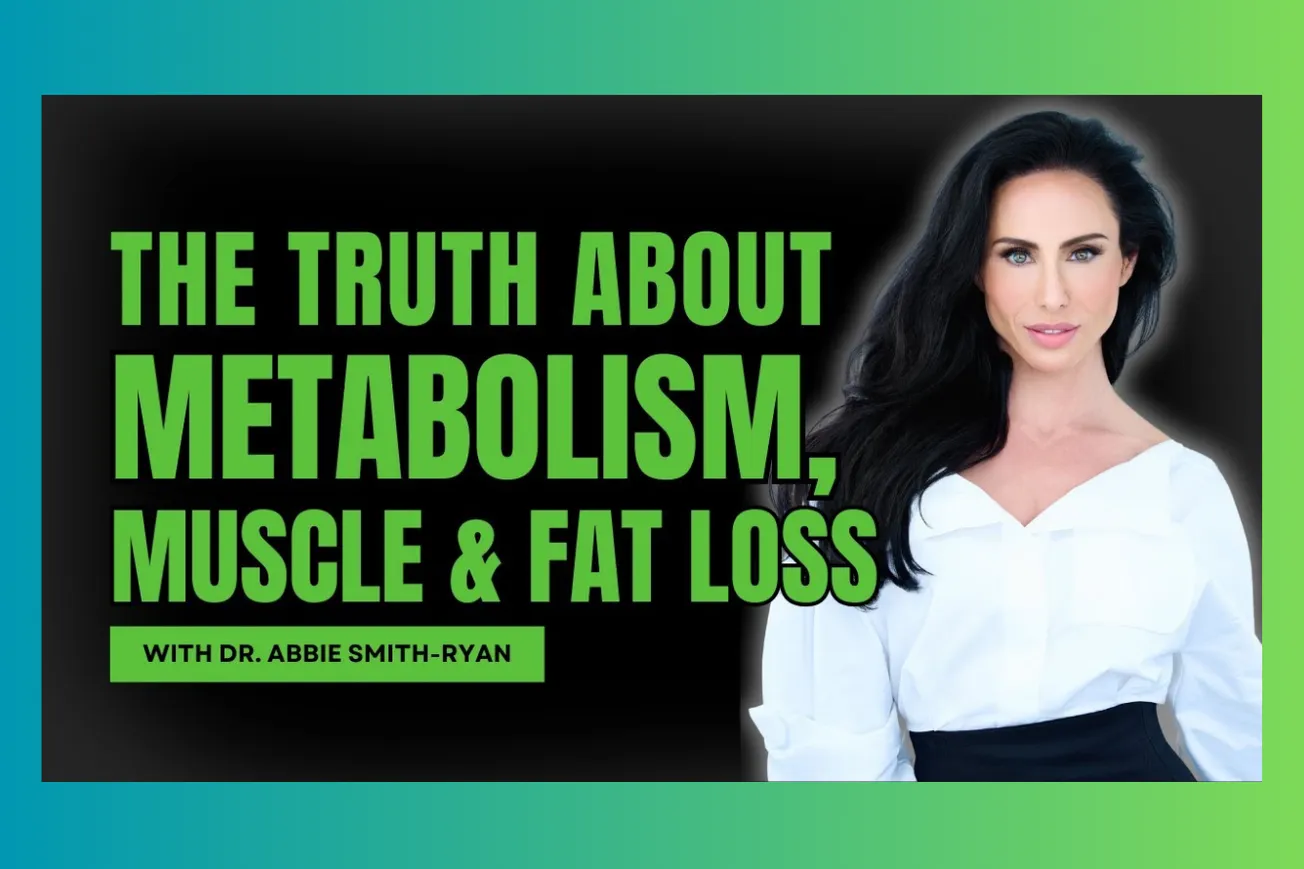Table of Contents
Despite persistent myths about female-specific training needs, cutting-edge research reveals that effective exercise principles work remarkably similarly across sexes, with some key nuances for optimization.
Key Takeaways
- High-intensity interval training (HIIT) produces measurable improvements in VO2 max within just 3 weeks versus 12-16 weeks for traditional endurance training
- Women demonstrate greater fatigue resistance and more type 1 muscle fibers, potentially requiring slightly different rest intervals for optimal adaptation
- Perimenopause represents a critical window for body composition changes, but these aren't necessarily driven by hormonal factors alone
- Most training recommendations are based on male research, creating a significant knowledge gap for female-specific exercise prescription
- Protein requirements for active women start at 1.6g/kg daily, increasing to 2.0g/kg for perimenopausal women trying to prevent fat gain
- Pre-exercise protein intake may optimize training volume and post-exercise energy expenditure more effectively than fasted training
- Eating disorders show the greatest increase in the perimenopausal population, often manifesting as chronic underfueling despite weight gain concerns
- Progressive overload principles apply universally, but load progression can occur through weight, volume, or intensity modifications
- Women perform at high levels regardless of menstrual cycle phase, though individual optimization strategies may vary
The High-Intensity Revolution: Maximum Results in Minimum Time
Dr. Abbie Smith-Ryan's research at the University of North Carolina Charlotte has focused extensively on high-intensity interval training (HIIT) because of its remarkable efficiency and effectiveness. In a world where "lack of time" represents the most common exercise barrier, HIIT delivers measurable cardiovascular improvements in just 3 weeks compared to the 12-16 weeks typically required for traditional endurance training.
The protocol that forms the foundation of much of Smith-Ryan's work involves 10 sets of 1 minute on, 1 minute off - chosen not because it's the optimal approach, but because it's psychologically accessible. Anyone can conceptualize pushing hard for just one minute, making the protocol more approachable than percentage-based prescriptions that require complex calculations.
This approach has proven effective across diverse populations, from cancer patients preparing for bone marrow transplants to individuals with osteoarthritis. The key insight is that intensity remains relative to individual fitness levels. For a sedentary person, the "hard" minute might involve chair stands or slow walking. For a trained athlete, it requires much higher outputs.
The physiological adaptations occur rapidly because HIIT creates significant glycogen utilization during the workout, followed by metabolic changes in the 24-48 hours afterward. Unlike traditional steady-state cardio that burns calories primarily during exercise, HIIT's benefits extend well beyond the training session through improved mitochondrial function and enhanced fat oxidation capacity.
Smith-Ryan's research consistently shows improvements in VO2 max - the gold standard measure of cardiovascular health and the strongest predictor of longevity. Beyond cardiovascular benefits, her lab was among the first to demonstrate that HIIT can increase both muscle quantity and quality, particularly when cycling modalities load the leg muscles substantially.
Sex Differences: Real But Often Overstated
The question of sex-based training differences generates significant debate, but Smith-Ryan's perspective cuts through the noise with refreshing clarity. While acknowledging that some physiological differences exist between men and women, she emphasizes that the focus should be on optimizing training for women rather than comparing them to men.
Women generally demonstrate greater fatigue resistance and higher proportions of type 1 (oxidative) muscle fibers compared to men. These characteristics contribute to different metabolic profiles during exercise, potentially affecting recovery needs and optimal training parameters. However, chronic training can override many baseline genetic differences, explaining why training principles work effectively across sexes.
The practical implications might involve slightly modified rest intervals for women during high-intensity training. Where research typically prescribes specific recovery periods based on male subjects, women might benefit from marginally different approaches to achieve similar adaptations. However, these modifications represent fine-tuning rather than fundamental program overhauls.
Individual variation often exceeds sex-based differences. A woman with an endurance background might respond differently to training than one with a strength background, regardless of sex-specific physiology. Similarly, training history, genetics, and lifestyle factors create more significant response variations than biological sex alone.
The key insight is that women will perform at high levels regardless of where they are in their menstrual cycle or what specific training approach they follow. The focus should remain on consistency, progressive overload, and sustainable practices rather than complex sex-specific protocols.
The Perimenopause Body Composition Challenge
Smith-Ryan's recent research focus on perimenopause emerged from data showing significant body composition and health changes occurring between the late 30s and 40s. This transition period represents a critical window where many women experience frustrating changes despite maintaining similar lifestyle habits.
The research reveals that women do gain weight during perimenopause, but the composition of that weight gain matters enormously. While fat mass increases, muscle mass simultaneously decreases - a double impact that affects both appearance and metabolic health. This combination explains why women might maintain stable weight on the scale while experiencing significant changes in how they look and feel.
Chronic exercise appears protective against these changes, with earlier intervention producing better outcomes. However, the relationship between hormonal changes and body composition isn't as straightforward as commonly believed. While hormones certainly play a role, lifestyle factors including exercise consistency, nutrition quality, and stress management often have larger impacts.
Smith-Ryan's lab has documented resting metabolic rates as low as 500 calories in some perimenopausal women - dramatically below expected levels. Investigation suggests these extreme reductions often correlate with prolonged periods of underfueling, creating metabolic adaptation that makes weight management increasingly difficult.
The solution involves stimulating muscle and mitochondria in ways they're not accustomed to, particularly through high-intensity training modalities. Zone 2 training, while popular, may actually make mitochondria more efficient rather than more active, potentially working against metabolic goals for this population.
Protein: The Foundation for Female Body Composition
Protein requirements for women extend beyond the basic RDA recommendations, particularly for those engaged in regular exercise. Smith-Ryan's research suggests 1.6 grams per kilogram of body weight daily as a starting point for active women, derived from Dr. Mark Tarnopolsky's work examining sex-based differences in protein metabolism.
For perimenopausal and postmenopausal women, requirements increase to approximately 2.0 grams per kilogram daily. This higher intake becomes particularly important when women attempt to prevent fat gain or improve body composition, as protein provides both metabolic and satiety advantages during periods of caloric moderation.
The timing of protein intake also matters, though perhaps not in the traditional "anabolic window" sense. Smith-Ryan's research suggests that pre-exercise protein or amino acid intake may optimize training volume and enhance post-exercise energy expenditure for up to an hour afterward. This approach appears particularly beneficial for women who might otherwise train in an underfueled state.
Most Americans consume inadequate protein early in the day, with the majority of intake occurring at dinner. Spreading protein across three meals with approximately 30 grams per meal provides a more optimal distribution for muscle protein synthesis and metabolic benefits throughout the day.
The quality of overall nutrition matters enormously. Many women present with low-quality diets despite consuming adequate or excess calories. This combination of overnutrition with undernutrition creates a challenging scenario where energy is abundant but essential nutrients for recovery and adaptation are lacking.
The Fasted Training Debate: Context Matters
The question of fasted versus fed training generates significant discussion, with Smith-Ryan's research providing nuanced insights. While acknowledging that some people train fasted successfully, her data suggests that pre-exercise nutrition may optimize several important factors for many women.
Fasted training can work, particularly for individuals who have adapted to this approach over time. However, research shows that having amino acids available prior to exercise may improve training volume, enhance fat utilization after exercise, and increase energy expenditure for up to an hour post-workout.
The benefits of pre-exercise nutrition appear particularly pronounced in untrained or moderately trained populations. These individuals often experience better energy levels, can complete higher training volumes, and report improved subjective experiences when fueled appropriately before exercise.
Individual context matters enormously. Someone who trains fasted but eats regularly throughout the day differs significantly from someone who extends fasting for many hours post-exercise. The latter scenario may compromise recovery and adaptation, particularly if training sessions occur frequently.
For women specifically, Smith-Ryan notes that many arrive at exercise underfueled due to attempts to lose weight through dietary restriction. This approach can backfire by reducing training quality and compromising the recovery processes that drive positive adaptations.
Research Gaps and Future Directions
Despite decades of exercise science research, significant gaps remain in understanding optimal training approaches for women. Most exercise recommendations derive from studies conducted primarily in men, with women either excluded or included without adequate consideration of sex-specific factors.
The challenge extends beyond simple inclusion. Studying women requires additional resources and complexity to account for menstrual cycle variations, hormonal fluctuations, and life stage considerations. Many researchers avoid these complications, perpetuating the knowledge gap.
Smith-Ryan advocates for more prescriptive exercise recommendations tailored to specific populations. Current guidelines suggest broad ranges of activity (150 minutes of moderate exercise weekly or 75 minutes of vigorous exercise) without considering individual goals, training history, or life circumstances.
Future research needs to address specific scenarios: What training approach works best for a perimenopausal woman experiencing body composition changes despite consistent exercise? How should recommendations differ for someone with extensive training history versus a beginner? These nuanced questions require targeted investigation.
The perimenopause population represents a particularly understudied group with significant research needs. This life stage affects roughly half the population yet receives minimal attention in exercise science literature. Understanding optimal interventions for this group could dramatically improve health outcomes for millions of women.
Practical Training Implementation
Translating research into actionable recommendations requires balancing scientific precision with real-world feasibility. Smith-Ryan's approach emphasizes starting with fundamental principles before adding complexity.
For beginners, the recommendation involves high-intensity interval training twice weekly combined with resistance training at least three times weekly. The HIIT sessions can be as simple as 5-6 rounds of 1 minute hard effort followed by 1 minute rest, progressing toward 10 rounds as fitness improves.
Resistance training should target larger muscle groups using compound movements, with progressive overload achieved through various methods. Weight increases represent one approach, but volume progression (additional sets or repetitions) and intensity modifications can also drive adaptation.
The key insight is that any stimulus represents improvement over sedentary behavior. Perfect programming matters less than consistent participation, particularly for individuals just beginning their fitness journey.
For more advanced trainees, the principles remain similar but require greater attention to progression strategies. Someone who has trained consistently for years may need more sophisticated approaches to continue seeing improvements, but the fundamental concepts of progressive overload and recovery remain central.
The Muscle Quality Revolution
Smith-Ryan's research has pioneered the concept of muscle quality as distinct from muscle quantity. Using advanced imaging techniques including ultrasound, PQCT, and MRI, her lab can assess not just how much muscle someone has, but how well that muscle functions.
Low muscle quality resembles a ribeye steak with significant fat infiltration, while high muscle quality appears more like a lean filet. This quality measure often predicts functional capacity better than simple muscle mass measurements and may be more sensitive to training adaptations.
High-intensity interval training appears particularly effective at improving muscle quality, even when performed on a bicycle rather than through traditional resistance exercise. This finding has significant implications for populations who might have difficulty with conventional strength training due to joint issues or other limitations.
The ability to measure muscle quality non-invasively opens new possibilities for exercise prescription and progress monitoring. Understanding not just whether someone has adequate muscle mass but whether that muscle functions optimally could revolutionize approaches to healthy aging and disease prevention.
Breaking Through Plateaus: Advanced Considerations
For individuals who have trained consistently but continue experiencing unwanted body composition changes, Smith-Ryan's research suggests several potential strategies. The concept of "earning your carbs" through exercise participation makes physiological sense, with carbohydrate needs scaling to activity levels.
Advanced trainees may require significant dietary deviations to see continued progress. Research suggests that muscle protein synthesis adaptations might require up to 60% increases above baseline protein intake in already-trained individuals. This could mean progressing from 1.3 grams per kilogram daily to 2.0 grams per kilogram for continued improvement.
The integration of different training modalities becomes important for long-term progress. While HIIT provides excellent cardiovascular and some muscle benefits, combining it with traditional resistance training likely optimizes results for body composition goals.
Recovery becomes increasingly important as training age and chronological age advance. Understanding how to manage training stress while maintaining stimulus for adaptation requires careful attention to sleep, nutrition, and stress management practices.
The Metabolic Rate Mystery
Smith-Ryan's observations of extremely low metabolic rates in some perimenopausal women highlight a concerning trend. Metabolic rates of 500 calories daily - well below expected values - appear to correlate with chronic underfueling patterns rather than inevitable hormonal changes.
This finding challenges common assumptions about menopausal metabolism. Rather than hormones automatically slowing metabolic rate, behavioral patterns of restrictive eating may create metabolic adaptations that make weight management increasingly difficult.
The solution involves strategic refeeding combined with metabolically demanding exercise. High-intensity training modalities that create metabolic stress can help reverse some of these adaptations by forcing mitochondria to work less efficiently and consume more energy.
Understanding this relationship could transform approaches to weight management during life transitions. Instead of accepting metabolic slowdown as inevitable, targeted interventions might prevent or reverse these changes through appropriate exercise and nutrition strategies.
The research suggests that consistency in fueling and training matters more than perfect timing or specific protocols. Creating sustainable habits that support metabolic health throughout life transitions may be more valuable than short-term interventions during crisis periods.





